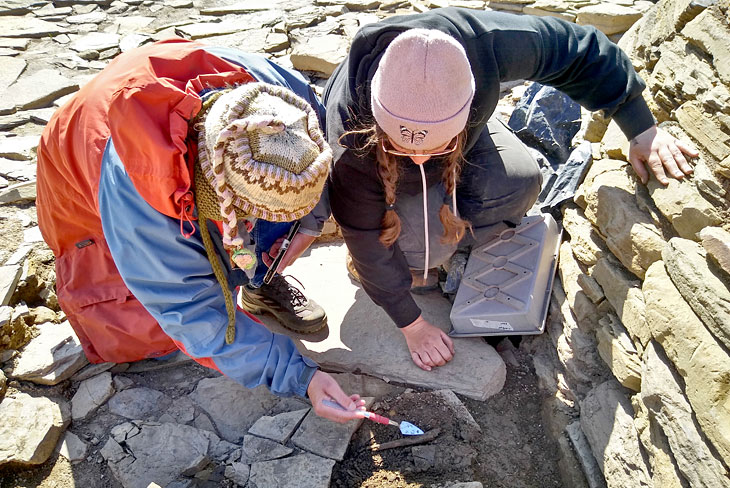Dig Diary – Timber plank hailed our ‘most exciting find’ to date

Day Twenty-Eight
Wednesday, August 9, 2023
Today, it was all hands on deck as the great, site-wide clean-up operation continued in earnest.
With a drone photography session scheduled for tomorrow, all the remaining sandbags had to be removed from every trench and every building given a good clean.
Surfaces that have, in some cases, been under cover for a few years were given a freshen up as an army of diggers worked their way across the site.







It was not a particularly easy task, given the strong winds that kept blowing the dust, debris and grass back into the trenches. But we can definitely say that the buildings look incredible and are (almost) ready for their photoshoot.
Because the majority of diggers were assigned to clean-up duty, today’s diary is shorter than usual, but we still have some incredible news to share.

As mentioned yesterday, a substantial deposit of wood appeared in the rubble debris inside Structure Twenty-Seven. The excitement levels reached fever pitch today when it was confirmed that we have a sizeable plank of Neolithic timber.
Not one for overstatement, finds supervisor, Anne, declared it to be the most exciting find from the site. And she’s not wrong. Organic material is very rare due to the acidic conditions of the soil.

That this plank has survived is remarkable and further study will (hopefully) reveal what type of wood it is – i.e. a species known to grow in Orkney in the Neolithic or something that had been hewn from driftwood.
Its excavation will be a painstaking process but we’re reasonably confident that it is substantial enough (in parts) to provide us with more information. (Click here for a 3d model of the in-situ plank)

Other finds today included a fine flint scraper, recovered by Lisa from the foundation layer in Structure Ten’s south-western corner.
Professor Mark Edmonds, a specialist in lithics, was suitably impressed by the small implement, declaring it to be one of the finest found on site so far.
Over in Trench T, Ruby was revealing more of the paving around Structure Twenty-Seven’s south-western corner when she came across the well-preserved fragment of a pot base. Not content with that, she went on to find other sherds that presumably came from the same vessel.



You will also recall that yesterday there was excitement outside Structure One when what initially appeared to be a human bone was unearthed.
By the end of the day, however, we were fairly sure that it wasn’t and this was confirmed today by the UHI Archaeology Institute’s Professor Ingrid Mainland. It is, in fact, the tibia of a sheep.


Other visitors today were Professor Colin Richards, also of the UHI Archaeology Institute, and who is well-known in Neolithic circles.
It was Colin who found, and excavated, the Barnhouse settlement back in the 1980s, and he has carried out projects at the Ring of Brodgar, Stonehall, Crossiecrown, Wideford Hill and Smerquoy. Among many, many others – in Orkney and beyond.
Also on site was Orkney’s county archaeologist Paul Sharman, who toured the site with dig director Nick, his former office-mate back at the UHI Archaeology Institute headquarters in Kirkwall.
Tomorrow, once Scott’s drone has captured its photographs of the now-pristine structures, we’ll all be back in the trenches.
And after that we’ll return with more news.
Until then.















